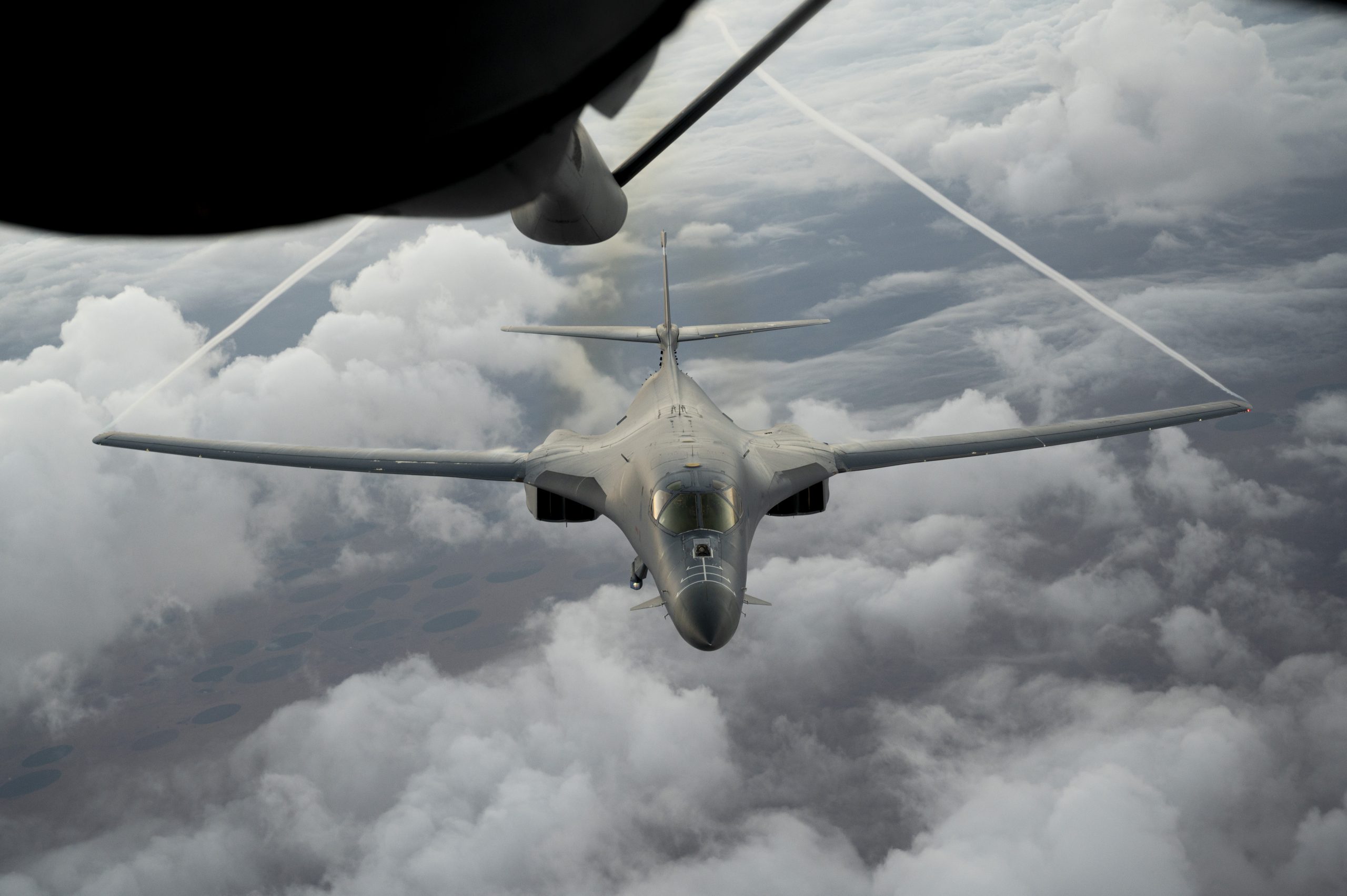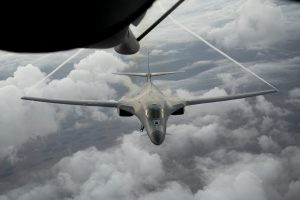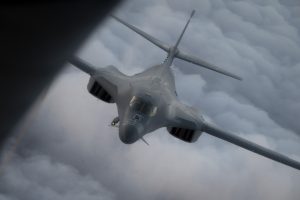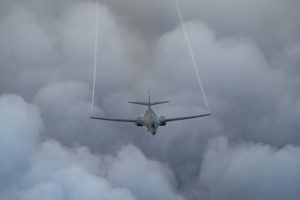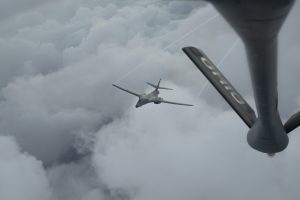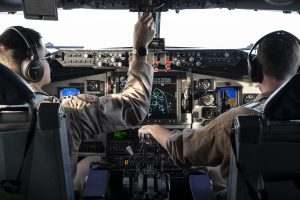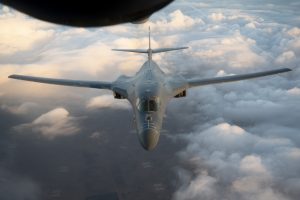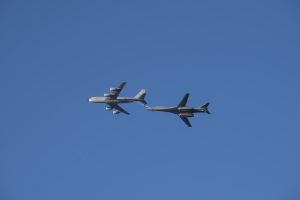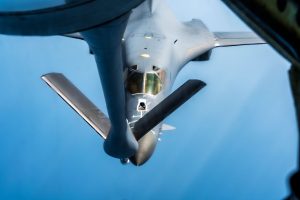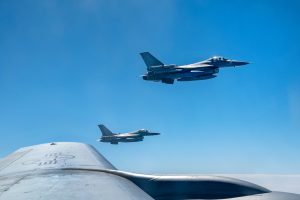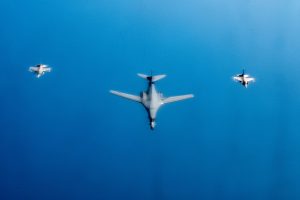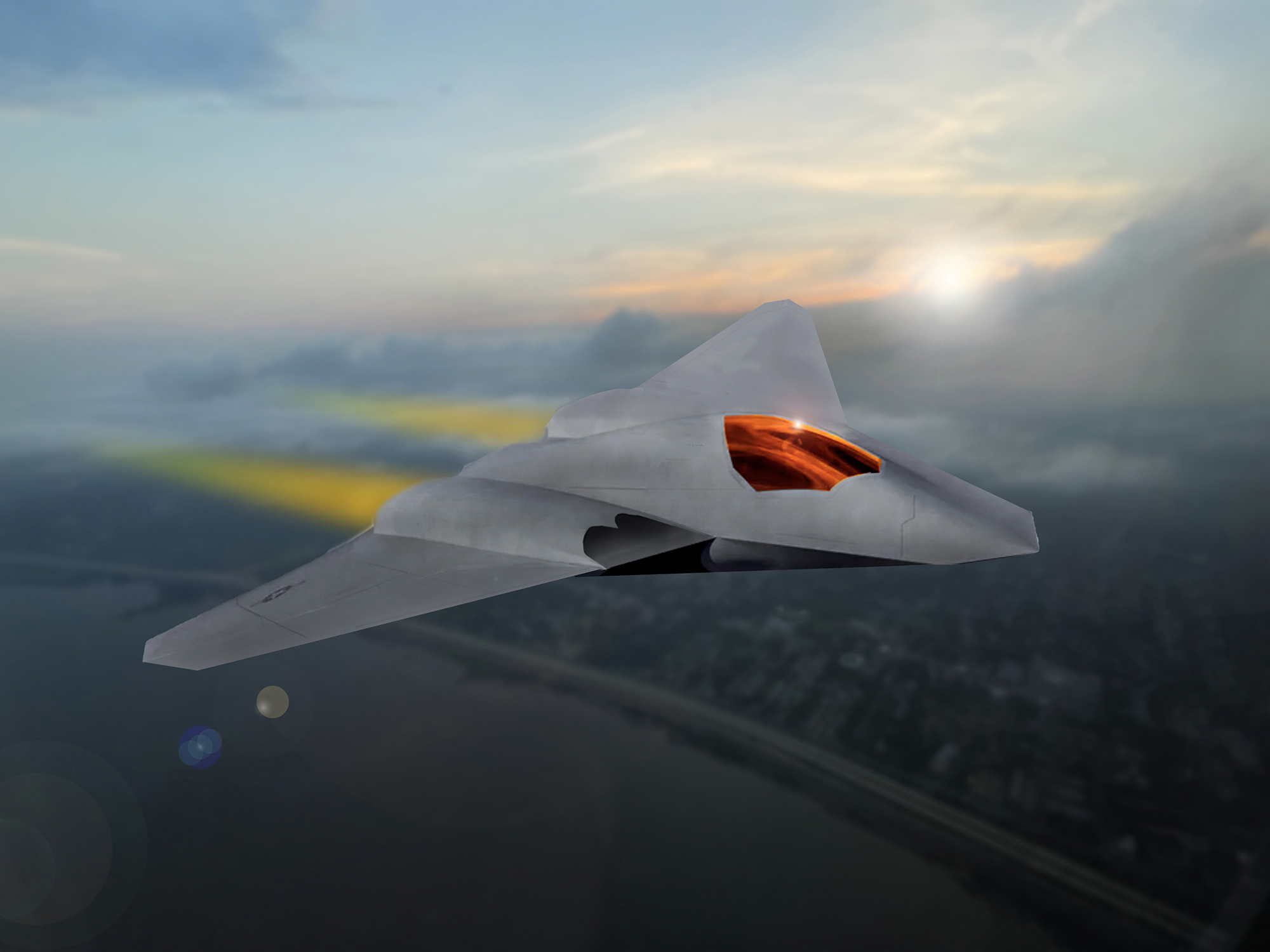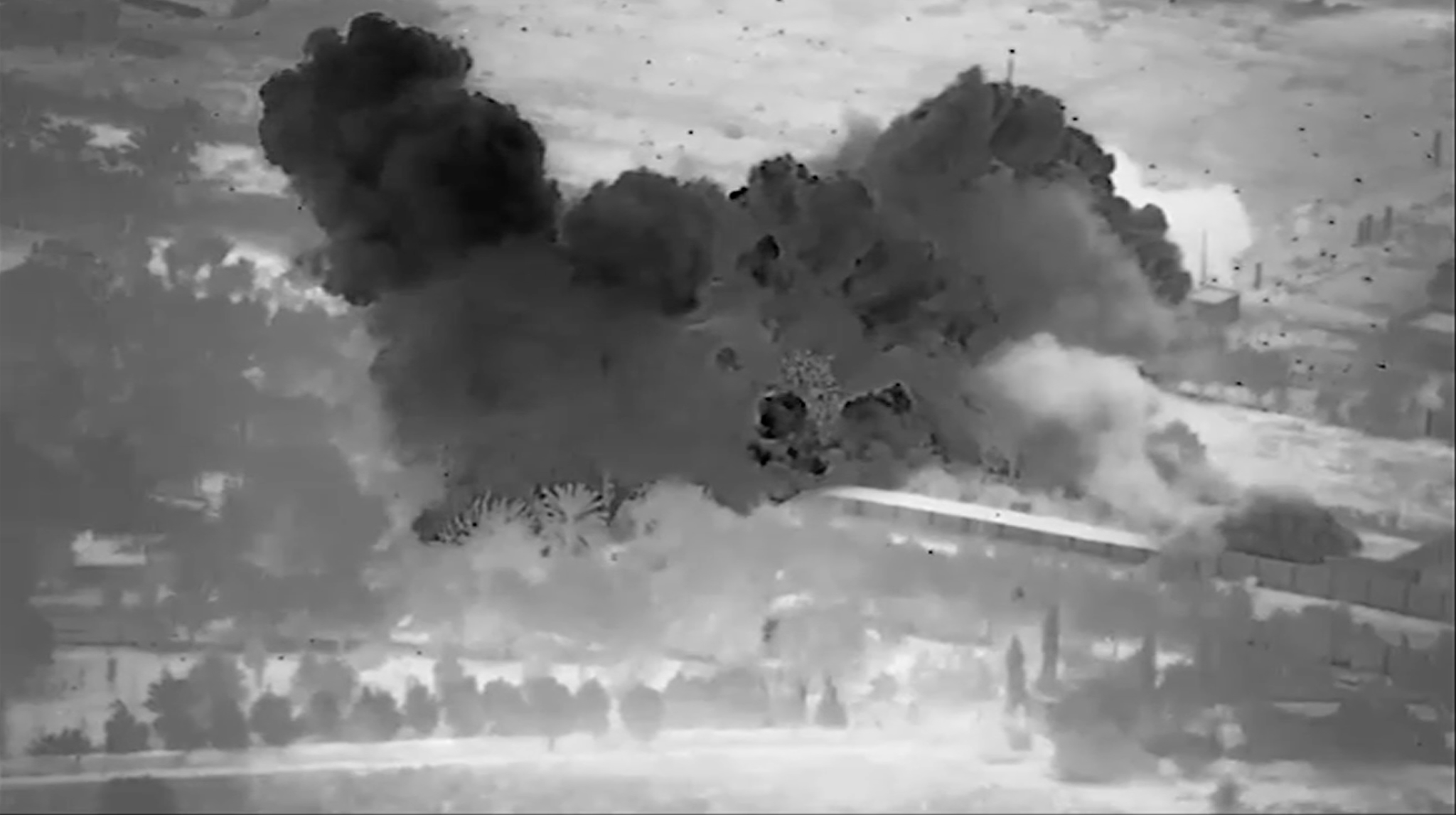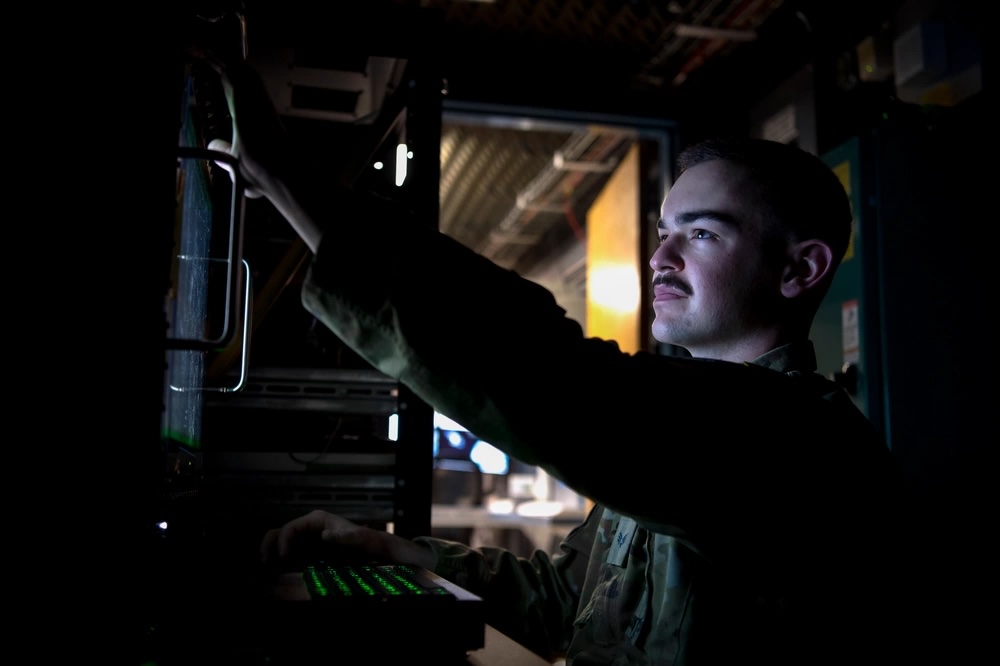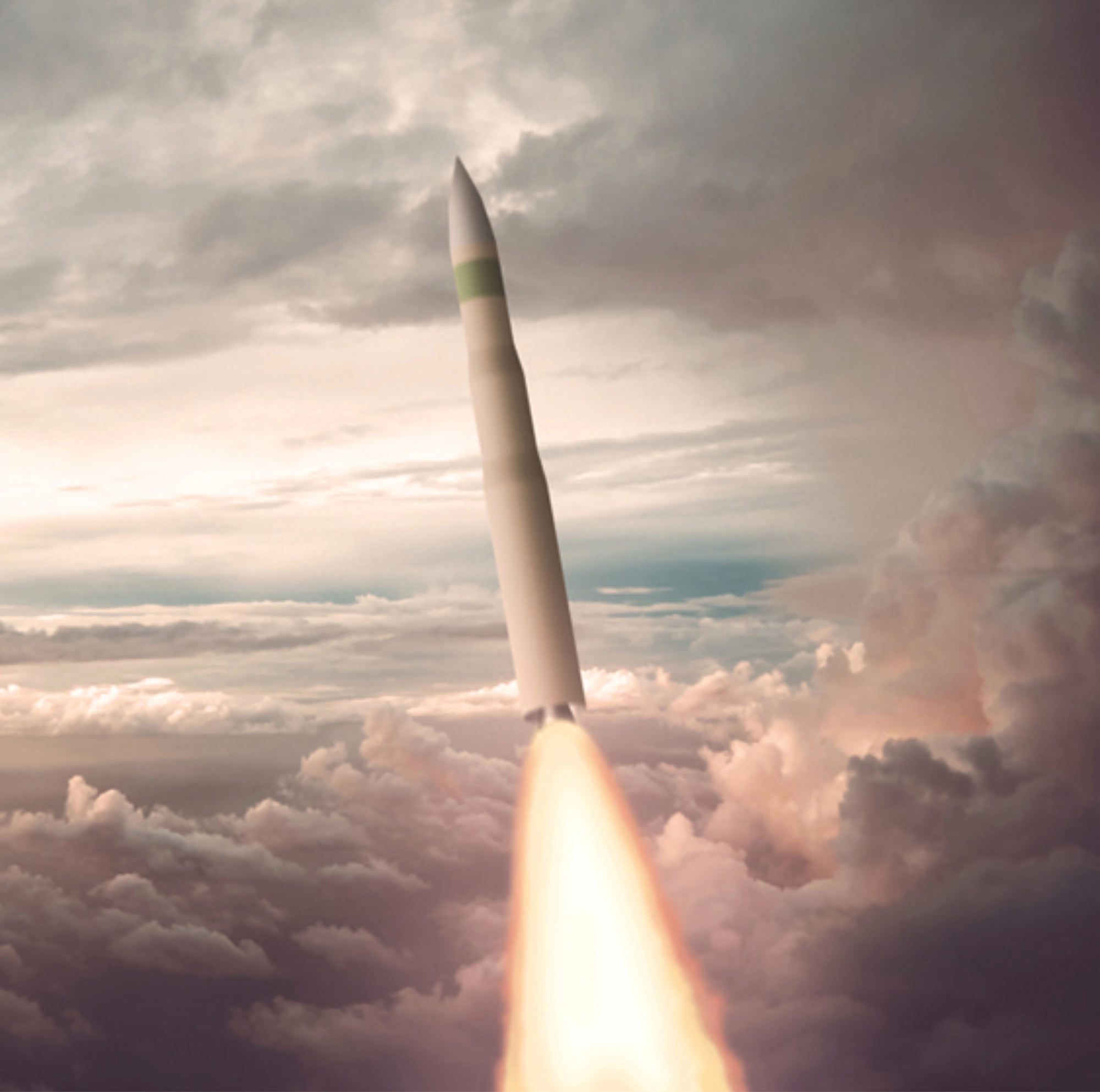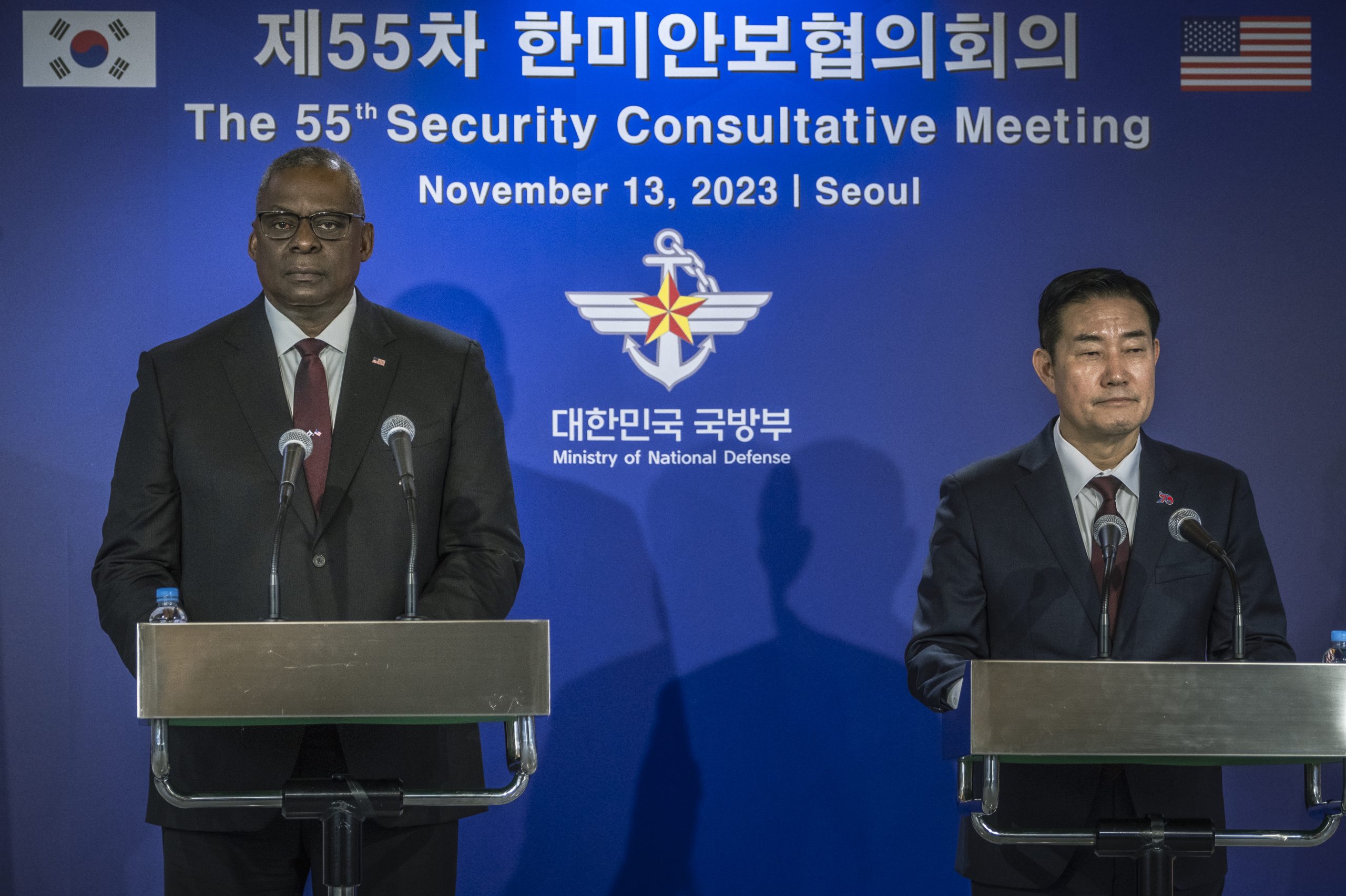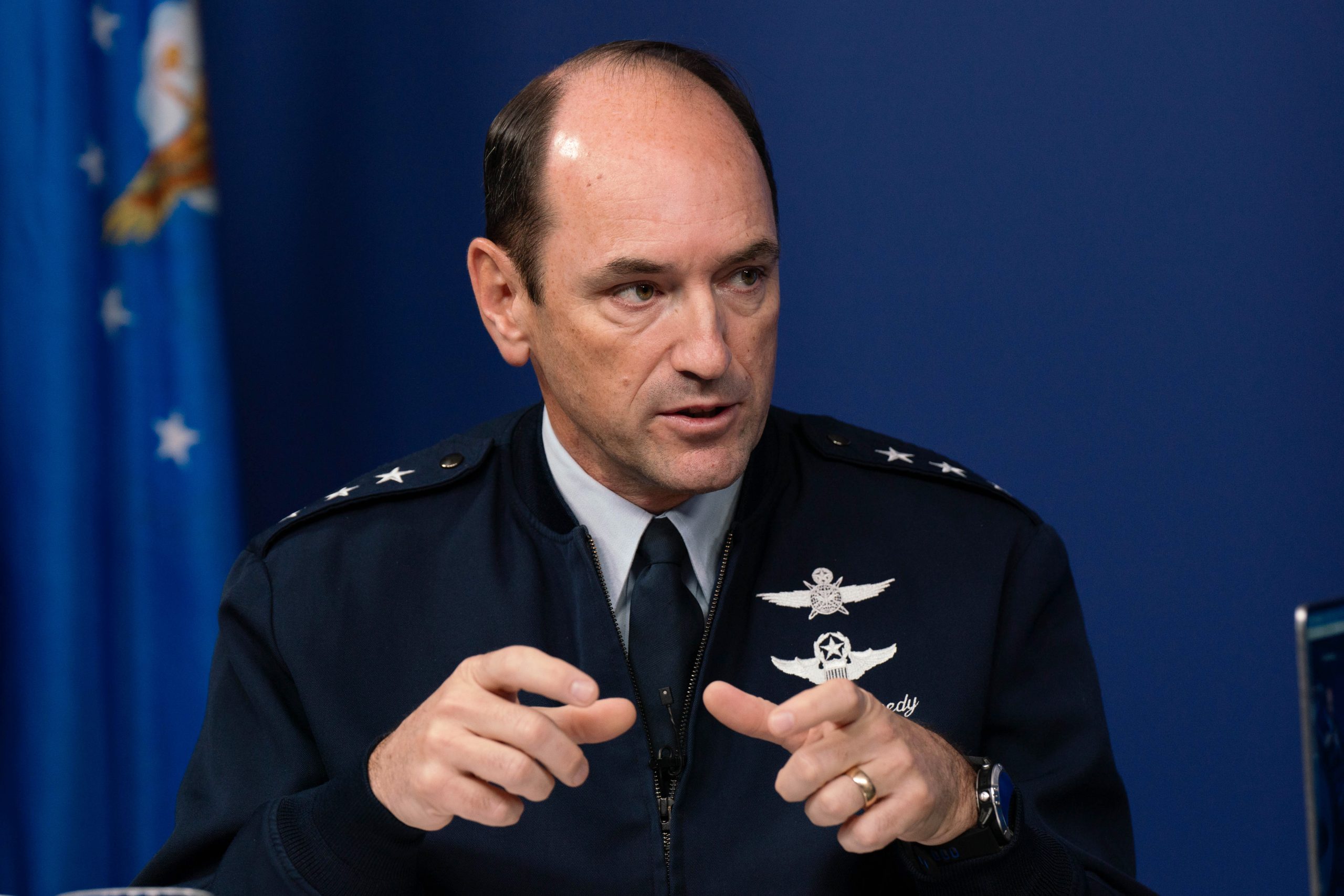U.S. Air Force B-1 bombers have flown missions over the Middle East three times in the last week and a half amid U.S. military activity and widespread unrest in the region.
When the first B-1 flight took place Nov. 5, Pentagon Press Secretary Air Force Brig. Gen. Patrick S. Ryder emphasized that it was a “long-planned Bomber Task Force mission” as part of the BTF rotation out of RAF Fairford, United Kingdom, which began Oct. 13.
“It’s important to differentiate the Bomber Task Force mission from the current situation in the Middle East,” Ryder said. at the time. U.S. troops have been attacked more than 50 times in the last month by Iranian-backed militias, as the entire region is on edge in the wake of the Israel-Hamas war.
U.S. Central Command subsequently announced a second B-1 flight took place Nov. 8, with the bomber from Dyess Air Force Base, Texas, escorted by F-16 fighters. Released images showed the fighters as belonging to the 138th Fighter Wing of the Oklahoma Air National Guard. The Tulsa-based Vipers are one of three F-16 squadrons in the region.
A third flight occurred Nov. 13, with the B-1 getting refueled by a KC-135 Stratotanker from the 121st Air Refueling Wing of the Ohio Air National Guard.
CENTCOM offered few details on the flights, merely stating that the missions showed “the ability to rapidly project combat power” while noting their frequency. No locations were disclosed.
In a social media post, Air Forces Central called the Nov. 13 flight “a regularly scheduled Bomber Task Force mission.”
It is not unusual for bombers deployed to Europe as part of a Bomber Task Force rotation to conduct missions over the Middle East. In June, B-1s from a BTF deploying to Europe conducted live-fire exercises at ranges in Jordan and Saudi Arabia. In March, a B-52 flew alongside fighter escort aircraft from seven different nations during a flight over the region.
However, three announced flights in eight days marks the most by a bomber task force in CENTCOM’s area of responsibility in recent years.
The U.S. has also surged other assets to the region in recent weeks, including additional attack and fighter squadrons, two aircraft carriers—the USS Dwight D. Eisenhower in the Red Sea and the USS Gerald R. Ford in the eastern Mediterranean Sea—and an Ohio-class cruise missile submarine in the Suez Canel.
